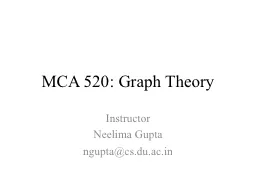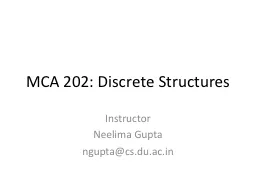PPT-MCA 520: Graph Theory
Author : olivia-moreira | Published Date : 2017-01-13
Instructor Neelima Gupta nguptacsduacin Table of Contents Directed Graphs Simple Digraph May contain one loop at each vertex Distance we say that a vertex y is
Presentation Embed Code
Download Presentation
Download Presentation The PPT/PDF document "MCA 520: Graph Theory" is the property of its rightful owner. Permission is granted to download and print the materials on this website for personal, non-commercial use only, and to display it on your personal computer provided you do not modify the materials and that you retain all copyright notices contained in the materials. By downloading content from our website, you accept the terms of this agreement.
MCA 520: Graph Theory: Transcript
Download Rules Of Document
"MCA 520: Graph Theory"The content belongs to its owner. You may download and print it for personal use, without modification, and keep all copyright notices. By downloading, you agree to these terms.
Related Documents














